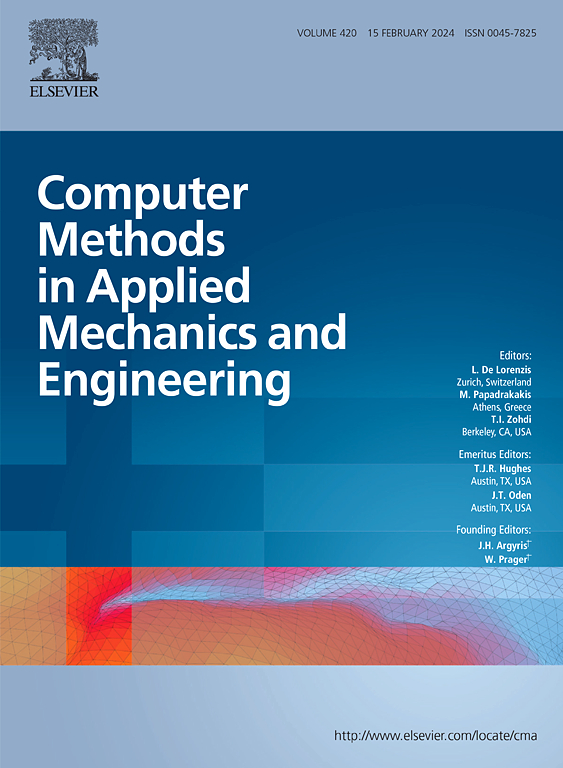Online multi-fidelity data aggregation via hierarchical neural network
IF 6.9
1区 工程技术
Q1 ENGINEERING, MULTIDISCIPLINARY
Computer Methods in Applied Mechanics and Engineering
Pub Date : 2025-02-02
DOI:10.1016/j.cma.2025.117795
引用次数: 0
Abstract
In many industrial applications requiring computational modeling, the acquisition of high-fidelity data is often constrained by cost and technical limitations, while low-fidelity data, though cheaper and easier to obtain, lacks the same level of accuracy. Multi-fidelity data aggregation addresses this challenge by combining both types of data to construct surrogate models, balancing modeling accuracy with data cost. Optimizing the placement and distribution of high-fidelity samples is also essential to improving model performance. In this work, we propose online multi-fidelity data aggregation via hierarchical neural network (OMA-HNN). This method comprises two key components: multi-fidelity data aggregation via hierarchical neural network (MA-HNN) and an online progressive sampling framework. MA-HNN integrates data of varying fidelities within a hierarchical network structure, employing nonlinear components to capture the differences across multi-fidelity levels. The online progressive sampling framework manages high-fidelity data acquisition through two stages: initial sampling and incremental sampling. For these stages, we develop the low-fidelity-surrogate assisted sampling (LAS) strategy for the initial phase and the model divergence-based active learning (MDAL) strategy for incremental sampling. OMA-HNN was rigorously tested on 15 numerical examples across diverse multi-fidelity scenarios and further validated through three real-world applications. The results demonstrate its effectiveness and practicality, underscoring OMA-HNN’s potential to enhance the reliability and efficiency of multi-fidelity data aggregation in industrial contexts.
求助全文
约1分钟内获得全文
求助全文
来源期刊
CiteScore
12.70
自引率
15.30%
发文量
719
审稿时长
44 days
期刊介绍:
Computer Methods in Applied Mechanics and Engineering stands as a cornerstone in the realm of computational science and engineering. With a history spanning over five decades, the journal has been a key platform for disseminating papers on advanced mathematical modeling and numerical solutions. Interdisciplinary in nature, these contributions encompass mechanics, mathematics, computer science, and various scientific disciplines. The journal welcomes a broad range of computational methods addressing the simulation, analysis, and design of complex physical problems, making it a vital resource for researchers in the field.

 求助内容:
求助内容: 应助结果提醒方式:
应助结果提醒方式:


